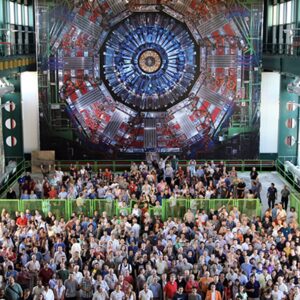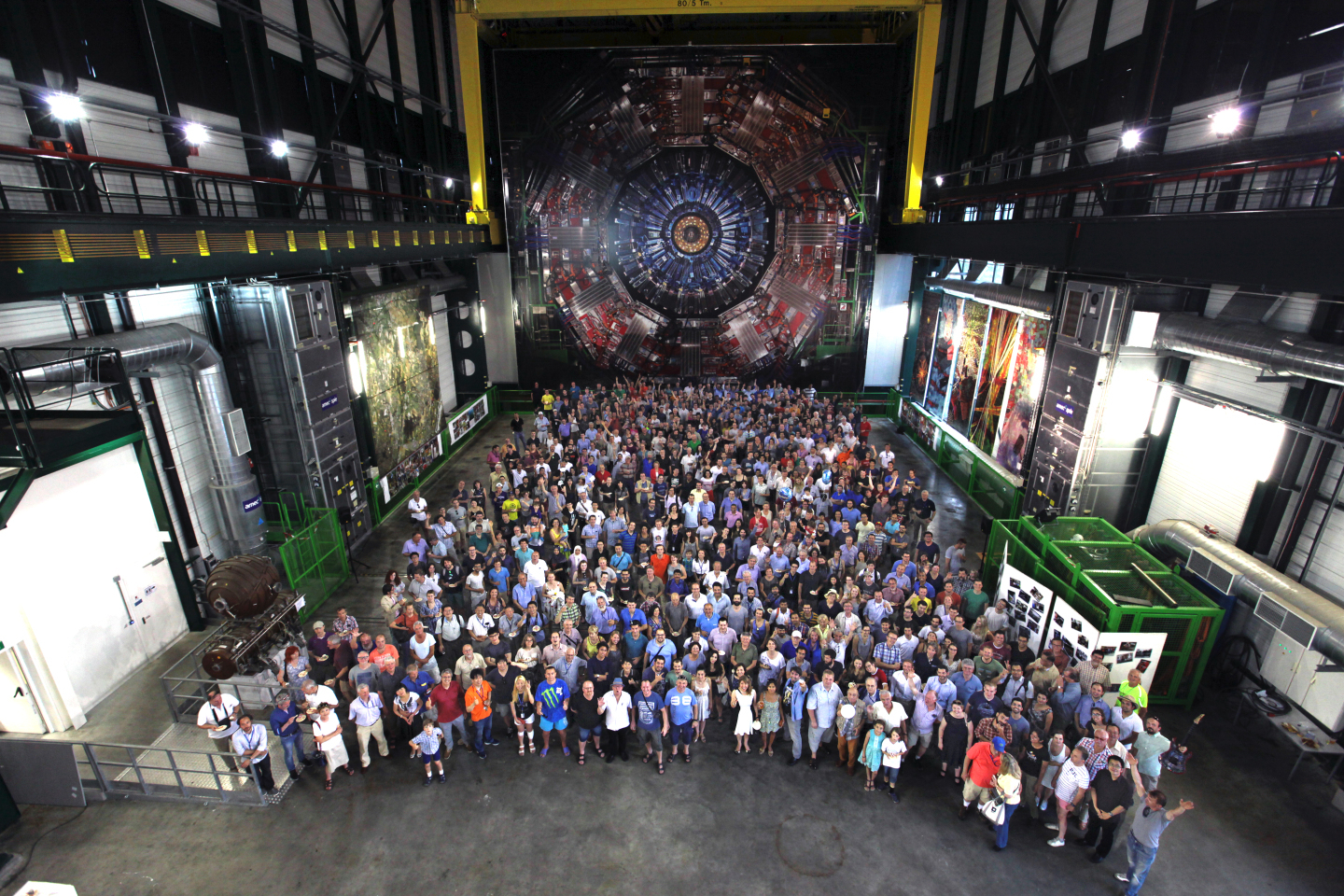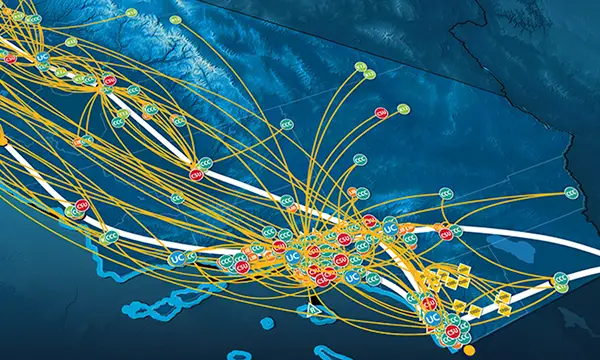- About
- Network
- Community
- Initiatives
- News
- Events
- Blog
- Publications

Global Big-Data Collaboration Gets Easier with Two New 100 Gbps Connections to CENIC and Pacific Wave for ESnet
Categories RENS & NRENS Pacific Wave Technology & Innovation
Tags big data esnet pacific wave
The Corporation for Education Network Initiatives (CENIC) is pleased to announce the turn-up of two 100 Gbps connections in Los Angeles: one between the Energy Sciences Network (ESnet) and CENIC and the other between ESnet and the Pacific Wave international distributed peering facility for research and education (R&E) networks. Pacific Wave is a joint project of CENIC, the Corporation for Education Network Initiatives in California, and the Pacific Northwest Gigapop (PNWGP).
These two 100 Gbps peering connections now function alongside ESnet’s existing 100 Gbps connections to Pacific Wave in Sunnyvale, CA and Seattle, WA. With these new connections, researchers at ESnet will enjoy greater performance and improved latency when collaborating with researchers both worldwide and within California—particularly with facilities in the southern part of the state, such as Caltech, the San Diego Supercomputer Center, and UCLA.
“The new peering with CENIC and Pacific Wave enables science researchers to have improved performance to Department of Energy user facilities, datasets, and collaborators. Together with CENIC, we are excited to provide this high-speed access to benefit California’s research and education community as well as science collaborators in Asia and on the west coast who are connected by Pacific Wave,” said Inder Monga, Executive Director of ESnet.
One example of a major international collaboration that will benefit from the improved connectivity within and beyond California is the Global Network Advancement Group (GNA-G)—a community of network professionals from national R&E networking (NREN) organizations all over the world. The GNA-G works together to better align resources and make continent-to-continent interconnections more efficient for global science collaborations and transnational education.
The GNA-G has several working groups, one of which—the Data-Intensive Sciences Working Group—brings together the world's NRENs and leading science programs with the joint mission of meeting the challenges of fostering a new generation of multidomain services and agile R&E network operations spanning world regions. Harvey Newman, Professor of Physics at Caltech and Chair of this working group, said, “The new peerings and 100 Gbps connections between CENIC and ESnet in Los Angeles represent another major step forward in the multifaceted collaboration with Caltech, UCSD, the National Research Platform, Internet2, and many US and international partners in the GNA-G, who are working to meet the needs of the Large Hadron Collider and other data-intensive science programs.”

Newman added that the new connections to ESnet will accelerate the development of the next-generation network-integrated system, which will meet these programs’ needs for worldwide data distribution, processing, and collaborative analysis on unprecedented scales while supporting the continued efficient use of these networks by current academic and research communities.
About CENIC | www.cenic.org
CENIC connects California to the world — advancing education and research statewide by providing the world-class network essential for innovation, collaboration, and economic growth. This nonprofit organization operates the California Research and Education Network (CalREN), a high-capacity network designed to meet the unique requirements of over 20 million users, including the vast majority of K-20 students together with educators, researchers, and others at vital public-serving institutions. CENIC’s charter associates are part of the world’s largest education system; they include the California K-12 system, California Community Colleges, the California State University system, California’s Public Libraries, the University of California system, Stanford, Caltech, USC, and the Naval Postgraduate School. CENIC also provides connectivity to leading-edge institutions and industry research organizations around the world, serving the public as a catalyst for a vibrant California.
About Pacific Wave | pacificwave.net
Pacific Wave (PacWave) is a distributed, Research and Education (R&E)-focused, open Internet exchange. It provides for very high-performance Internet connectivity among US Science and Engineering R&E institutions and their international partners and is critical infrastructure for access to internationally supported instruments and large-scale data sources and repositories.
Pacific Wave enables large-scale scientific workflows to accelerate discovery in all areas of science and engineering, including high-energy physics, Earth sciences, astronomy and astrophysics, biology, and biomedical engineering, as well as scalable visualization, virtual reality, machine learning, and artificial intelligence.
Pacific Wave is a joint project of CENIC, the Corporation for Education Network Initiatives in California, and the Pacific Northwest Gigapop (PNWGP).
About ESnet | es.net
The Energy Sciences Network (ESnet) is a high-performance, unclassified network built to support scientific research. Funded by the U.S. Department of Energy’s Office of Science (SC) and managed by Lawrence Berkeley National Laboratory, ESnet provides services to more than 50 DOE research sites, including the entire National Laboratory system, its supercomputing facilities, and its major scientific instruments, as well as to additional research and commercial networks. Through ESnet, DOE-funded scientists collaborate on some of the world’s most important scientific challenges, from the origins of the universe to the future of energy and climate science.
Related blog posts
The Big Game Is Big Data: How CENIC and the California Research and Education Network Support Member Athletics
When Fresno State needed to connect to Pac-12 Enterprises to broadcast a live football game over CBS, the Chancellor's Office reached out to CENIC for what Pac-12 later called the smoothest turn-up they've ever experienced.
Enabling Network-Based Collaboration Around the World: A Tour of CENIC and Partner Network Maps
On the Network Maps page at the CENIC website, you’ll find maps of all the networks, peering facilities, and exchanges to which CalREN connects, showing how thousands of CENIC member institutions connect to CalREN and to colleagues all over the globe.


